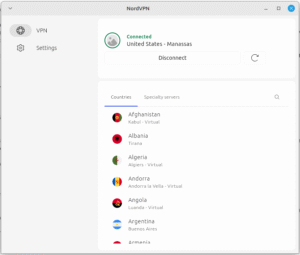Red Hat follows SUSE’s lead with an EU support pledge — raising the stakes in the race for European digital sovereignty.

On Thursday, Red Hat announced that it’s throwing its hat into the digital sovereignty ring. It’s launching a program — called Red Hat Confirmed Sovereign Support — which will be available in early 2026, which isn’t exactly on the heels of SUSE’s similar offering, but close enough.
Inside the EU, digital sovereignty is about the biggest thing in tech right now — probably even bigger than AI, if that’s possible. The term describes the notion that data that’s collected within a EU member nation should remain within the jurisdiction of that nation — or at least within the EU — and not be shared with governments or entities that are off the continent.
“Navigating the EU’s stringent regulatory and compliance frameworks demands an open source-driven, transparent, auditable foundation and a local operational support model,” Red Hat’s CTO and VP of global engineering, Chris Wright, said in a statement. “Confirmed Sovereign Support offers exactly that: a fully EU-anchored support experience, run by EU citizens for EU organizations backed by the trust of our open hybrid cloud portfolio.”
The US has always been the main driver behind the EU’s push to achieve digital sovereignty, since much of the continent’s IT use is centered not only on US controlled software from the likes of Microsoft and Oracle, but also because much of the region’s infrastructure is centered on large US clouds such as Amazon Web Services, Microsoft Azure, and Google Cloud Platform. These days, the move to digital sovereignty has become more urgent to the Europeans, as relations with the US move into uncertain waters.
“Digital sovereignty is not new, but the past few months have been quite intense in terms of geopolitical changes,” Thomas Di Giacomo, SUSE’s chief technology and product officer told me in a conversation last summer, soon after SUSE announced its sovereign support program. “It’s triggered a lot of discussion in Europe around how we need to be in control of our IT.”
SUSE Leads; Red Hat Follows
After being an active proponent of digital sovereignty for a number of years, the Germany- and Luxembourg-based enterprise Linux company SUSE launched Sovereign Premium Support in July, a program to help customers address regulatory requirements and meet digital sovereignty needs. It provides EU-based premium support engineers and service delivery managers, with customer-support-related data stored on EU-located networks and servers. Any data that needs to be moved for troubleshooting purposes is encrypted.
“It’s a premium support offering for Linux done within the EU,” Di Giacomo said. “We actually enforce that you don’t interact with people outside the EU in terms of your support, and that’s important for companies in the EU. It’s also key for global companies outside the EU doing business in the EU, because they also have to comply with EU regulations and the current trends.”
At the time the release was announced, SUSE pointed to data from IT researcher IDC indicating that 80% of EU-based organizations are either using sovereign cloud solutions or plan to use them by the end of this year.
Red Hat Confirmed Sovereign Support
Something that SUSE didn’t point out in its literature is that its Luxembourg/ Germany location makes it uniquely positioned for a Linux company offering to help companies meet EU digital sovereignty regulations. This advantage is not shared by Red Hat, which faces scrutiny because of its US location and IBM ownership, which means it will need to clear additional regulatory, structural, and operational hurdles in order to deliver sovereign services in the EU.
This probably explains why — even though much of its Confirmed Sovereign Support is nearly identical to SUSE’s offering — its bullet list of what Sovereign Support offers seems to focus on convincing regulators and potential customers that the US-based company can assure that what happens in the EU stays in the EU:
- “Dedicated EU-Citizen staffing: Access to support expertise delivered by verified European Union citizens operating solely within the 27 EU member states.
- Localized operational control: Reinforces that EU technical support oversees the provision of support services.
- 24/7 in-region availability: Provides round-the-clock technical support delivered within the EU region, aligning with sovereignty and service continuity requirements.
- Expansive local ecosystem: Red Hat’s approach is further amplified by its robust ecosystem of more than 500 EU cloud partners, many of whom already offer sovereign clouds. This powerful network helps strategically reduce reliance on non-EU hyperscalers, providing customers with robust, local alternatives that align directly with regional regulatory policies and economic priorities.
- Foundation for sovereign cloud: Red Hat Confirmed Sovereign Support is built to underpin Red Hat’s broader open hybrid cloud and AI portfolios, enabling organizations to deploy, run and maintain both current and future IT estates independently across any sovereign cloud environment.”
Other than that, Red Hat’s announcement mainly contained Wright’s statement, and this from Hans Roth, Red Hat’s EMEA SVP and GM:
“Red Hat is making a clear, demonstrable investment in European digital sovereignty. European organizations require control over their infrastructure, and that control must start with the people who support it. With Red Hat Confirmed Sovereign Support, we are directly addressing this demand by delivering an EU-citizen-driven support team and workflow for our enterprise open source solutions.”
Measure for Measure
For the time being, Red Hat’s hold card is OpenShift, its open source build-your-own-cloud platform that can be used as a way to keep data on-premises instead of farming it out to a cloud. That’s not a solution for companies without a formidable IT staff however, as OpenShift is thought by many to be complex, heavyweight, and difficult to maintain compared to Kubernetes-based solutions.
On the Kubernetes front, SUSE — with Rancher — and Red Hat — with OpenShift — are effectively at competitive parity, which moves the focus to public clouds used to run Kubernetes-based cloud native infrastructures.
For digital sovereignty, you can pretty much count the big hyperscalers out, since no matter how much Amazon, Microsoft, and Google promise to keep customer data safely localized, US laws give the US jurisdiction to subpoena data on US-owned servers located on foreign soil. That moves the focus to the growing number of EU-owned clouds such as Exoscale, Open Telekom Cloud, and others, where for the time being SUSE has the upper hand, due to its longstanding relationships with these players.
However, that advantage is subject to change as Red Hat pursues jumping over sovereignty and regulation-compliance hurdles. As Red Hat puts more boots on the ground in the EU, this will inevitably help it build closer relationships within the EU.
That temporarily puts the ball in SUSE’s court. Can it take advantage of its running start to solidify its position in the digital sovereignty arena?
Christine Hall has been a journalist since 1971. In 2001, she began writing a weekly consumer computer column and started covering Linux and FOSS in 2002 after making the switch to GNU/Linux. Follow her on Twitter: @BrideOfLinux








Be First to Comment